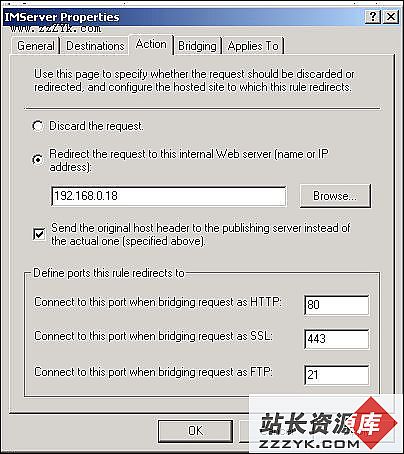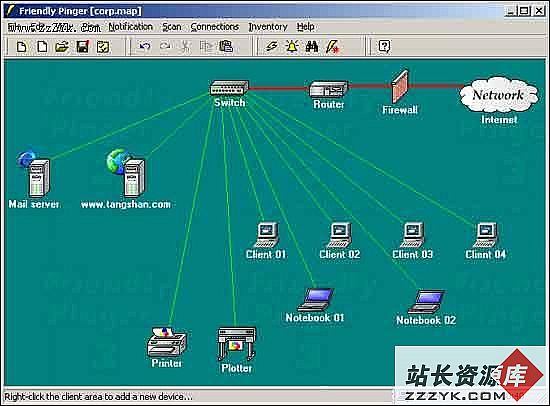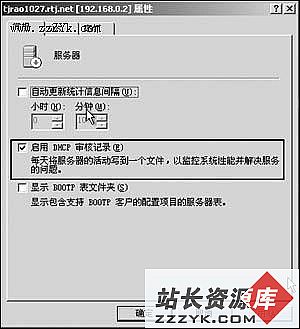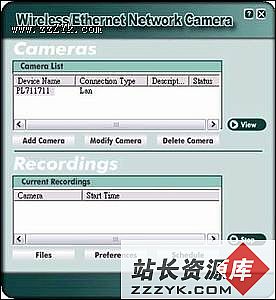答案:网络安全是一个非常重要的课题,基本上你运行的服务后台越多,你就可能打开更多的安全漏洞.如果配置的恰当的话,Linux本身是非常安全可靠的,假使在Linux系统中有某个安全缺陷,由于Linux的源码是开放的,有成千上万的志愿者会立刻发现并修补它。本文旨在介绍用来增强你的网络安全性的常用技巧,以Redhat Linux作为操作环境。
1.操作系统内部的log file是检测是否有网络入侵的重要线索,当然这个假定你的logfile不被侵入者所破坏,如果你有台服务器用专线直接连到Internet上,这意味着你的IP地址是永久固定的地址,你会发现有很多人对你的系统做telnet/ftp登录尝试,试着运行#more /var/log/secure | grep refused 去检查。
2. 限制具有SUID权限标志的程序数量,具有该权限标志的程序以root身份运行,是一个潜在的安全漏洞,当然,有些程序是必须要具有该标志的,象passwd程序。
3.BIOS安全。设置BIOS密码且修改引导次序禁止从软盘启动系统。
4. 用户口令。用户口令是Linux安全的一个最基本的起点,很多人使用的用户口令就是简单的‘password,这等于给侵入者敞开了大门,虽然从理论上说没有不能确解的用户口令,只要有足够的时间和资源可以利用。比较好的用户口令是那些只有他自己能够容易记得并理解的一串字符,并且绝对不要在任何地方写出来。
5./etc/exports 文件。如果你使用NFS网络文件系统服务,那么确保你的/etc/exports具有最严格的存取权限设置,这意味着不要使用任何通配符,不允许root写权限,mount成只读文件系统。编辑文件/etc/exports并且加:例如:
/dir/to/export host1.mydomain.com(ro,root_squash)
/dir/to/export host2.mydomain.com(ro,root_squash)
/dir/to/export 是你想输出的目录,host.mydomain.com是登录这个目录的机器名,ro意味着mount成只读系统,root_squash禁止root写入该目录。
为了让上面的改变生效,运行/usr/sbin/exportfs -a6.确信/etc/inetd.conf的所有者是root,且文件权限设置为600 。
[root@deep]# chmod 600 /etc/inetd.conf
ENSURE that the owner is root.
[root@deep]# stat /etc/inetd.conf
file: "/etc/inetd.conf"
Size: 2869 Filetype: Regular File
Mode: (0600/-rw-------) Uid: ( 0/ root) Gid: ( 0/ root)
Device: 8,6 Inode: 18219 Links: 1
Access: Wed Sep 22 16:24:16 1999(00000.00:10:44)
Modify: Mon Sep 20 10:22:44 1999(00002.06:12:16)
Change:Mon Sep 20 10:22:44 1999(00002.06:12:16)
编辑/etc/inetd.conf禁止以下服务:
ftp, telnet, shell, login, exec, talk, ntalk, imap, pop-2, pop-3, finger, auth, etc. 除非你真的想用它。特别是禁止那些r命令.如果你用ssh/scp,那么你也可以禁止掉telnet/ftp。
为了使改变生效,运行#killall -HUP inetd 你也可以运行#chattr +i /etc/inetd.conf使该文件具有不可更改属性。只有root 才能解开,用命令 #chattr -i /etc/inetd.conf7. TCP_WRAPPERS
默认地,Redhat Linux允许所有的请求,用TCP_WRAPPERS增强你的站点的安全性是举手之劳,你可以放入
“ALL: ALL”到/etc/hosts.deny中禁止所有的请求,然后放那些明确允许的请求到/etc/hosts.allow中,如:
sshd: 192.168.1.10/255.255.255.0 gate.openarch.com
对IP地址192.168.1.10和主机名gate.openarch.com,允许通过ssh连接。配置完了之后,用tcpdchk检查
[root@deep]# tcpdchk
tcpchk是TCP_Wrapper配置检查工具,它检查你的tcp wrapper配置并报告所有发现的潜在/存在的问题。8. 别名文件aliases
编辑别名文件/etc/aliases(也可能是/etc/mail/aliases),移走/注释掉下面的行。
# Basic system aliases -- these MUST be present.
MAILER-DAEMON: postmaster
postmaster: root
# General redirections for pseudo accounts.
bin: root
daemon: root
#games: root ?remove or comment out.
#ingres: root ?remove or comment out.
nobody: root
#system: root ?remove or comment out.
#toor: root ?remove or comment out.
#uucp: root ?remove or comment out.
# Well-known aliases.
#manager: root ?remove or comment out.
#dumper: root ?remove or comment out.
#operator: root ?remove or comment out.
# trap decode to catch security attacks
#decode: root
# Person who should get roots mail
#root: marc
最后更新后不要忘记运行/usr/bin/newaliases,使改变生效。9.阻止你的系统响应任何从外部/内部来的ping请求。
既然没有人能ping通你的机器并收到响应,你可以大大增强你的站点的安全性。你可以加下面的一行命令到/etc/rc.d/rc.local,以使每次启动后自动运行。
echo 1 > /proc/sys/net/ipv4/icmp_echo_ignore_all10. 不要显示出操作系统和版本信息。
如果你希望某个人远程登录到你的服务器时不要显示操作系统和版本信息,你能改变
/etc/inetd.conf中的一行象下面这样:
telnet stream tcp nowait root /usr/sbin/tcpd in.telnetd -h
加-h标志在最后使得telnet后台不要显示系统信息,而仅仅显示login:11.The /etc/host.conf file
编辑host.conf文件(vi /etc/host.conf)且加下面的行:
# Lookup names via DNS first then fall back to /etc/hosts.
order bind,hosts
# We don have machines with multiple IP addresses on the same card
(like virtual server,IP Aliasing).
multi off
# Check for IP address spoofing.
nospoof on
IP Spoofing: IP-Spoofing is a security exploit that works by tricking
computers in a trust relationship that you are someone that you really aren .12. The /etc/securetty file
该文件指定了允许root登录的tty设备,/etc/securetty被/bin/login程序读取,它的格式是一行一个被允许的名字列表,如你可以编辑/etc/securetty且注释出下面的行。
tty1
#tty2
#tty3
#tty4
#tty5
#tty6
#tty7
#tty8
-意味着root仅仅被允许在tty1终端登录。13. 特别的帐号
禁止所有默认的易做图作系统本身启动的且不需要的帐号,当你第一次装上系统时就应该做此检查,Linux提供了各种帐号,你可能不需要,如果你不需要这个帐号,就移走它,你有的帐号越多,就越容易受到攻击。
为删除你系统上的用户,用下面的命令:
[root@deep]# userdel username
为删除你系统上的组用户帐号,用下面的命令:
[root@deep]# groupdel username
在终端上打入下面的命令删掉下面的用户。
[root@deep]# userdel adm
[root@deep]# userdel lp
[root@deep]# userdel sync
[root@deep]# userdel shutdown
[root@deep]# userdel halt
[root@deep]# userdel mail
如果你不用sendmail服务器,procmail.mailx,就删除这个帐号。
[root@deep]# userdel news
[root@deep]# userdel uucp
[root@deep]# userdel operator
[root@deep]# userdel games
如果你不用X windows 服务器,就删掉这个帐号。
[root@deep]# userdel gopher
[root@deep]# userdel ftp
如果你不允许匿名FTP,就删掉这个用户帐号。
===
打入下面的命令删除组帐号
[root@deep]# groupdel adm
[root@deep]# groupdel lp
[root@deep]# groupdel mail
如不用Sendmail服务器,删除这个组帐号
[root@deep]# groupdel news
[root@deep]# groupdel uucp
[root@deep]# groupdel games
如你不用X Windows,删除这个组帐号
[root@deep]# groupdel dip
[root@deep]# groupdel pppusers
[root@deep]# groupdel popusers
如果你不用POP服务器,删除这个组帐号
[root@deep]# groupdel slipusers
====
用下面的命令加需要的用户帐号
[root@deep]# useradd username
用下面的命令改变用户口令
[root@deep]# passwd username
用chattr命令给下面的文件加上不可更改属性。
[root@deep]# chattr +i /etc/passwd
[root@deep]# chattr +i /etc/shadow
[root@deep]# chattr +i /etc/group
[root@deep]# chattr +i /etc/gshadow14. 阻止任何人su作为root.
如果你不想任何人能够su作为root,你能编辑/etc/pam.d/su加下面的行:
auth sufficient /lib/security/pam_rootok.so debug
auth required /lib/security/pam_wheel.so group=isd
意味着仅仅isd组的用户可以su作为root. 然后,如果你希望用户admin能su作为root.就运行下面的命令。
[root@deep]# usermod -G10 admin16. 资源限制
对你的系统上所有的用户设置资源限制可以防止DoS类型攻击(denial of service attacks)如最大进程数,内存数量等。例如,对所有用户的限制象下面这样:
编辑/etc/security/limits.con加:
* hard core 0
* hard rss 5000
* hard nproc 20
你也必须编辑/etc/pam.d/login文件加/检查这一行的存在。
session required /lib/security/pam_limits.so
上面的命令禁止core files“core 0”,限制进程数为“nproc 50“,且限制内存使用
为5M“rss 5000”。17. The /etc/lilo.conf file
a) Add: restricted
加这一行到每一个引导映像下面,就这表明如果你引导时用(linux single),则需要一个password.
b) Add: password=some_password
当与restricted联合用,且正常引导时,需要用户输入密码,你也要确保lilo.conf文件不能被不属于root的用户可读,也免看到密码明文。下面是例子:
编辑/etc/lilo.conf加:
====
boot=/dev/sda
map=/boot/map
install=/boot/boot.b
prompt
timeout=50
Default=linux
restricted ?add this line.
password=some_password ?add this line.
image=/boot/vmlinuz-2.2.12-20
label=linux
initrd=/boot/initrd-2.2.12-10.img
root=/dev/sda6
read-only
[root@deep]# chmod 600 /etc/lilo.conf (不再能被其他用户可读).
[root@deep]# /sbin/lilo -v (更新lilo配置).
[root@deep]# chattr +i /etc/lilo.conf(阻止该文件被修改)18. 禁止 Control-Alt-Delete 重启动机器命令
[root@deep]# vi /etc/inittab
ca::ctrlaltdel:/sbin/shutdown -t3 -r now
To
#ca::ctrlaltdel:/sbin/shutdown -t3 -r now
[root@deep]# /sbin/init q19. 重新设置/etc/rc.d/init.d/目录下所有文件的许可权限
[root@deep]# chmod -R 700 /etc/rc.d/init.d/*
仅仅root可以读,写,执行上述所有script file.20. The /etc/rc.d/rc.local file
默认地,当你login到linux server时,它告诉你linux版本名,内核版本名和服务器主机名。它给了你太多的信息,如果你就希望得到提示login: ,编辑/etc/rc.d/rc.local放#在下面的行前面:
--
# This will overwrite /etc/issue at every boot. So, make any changes you
# want to make to /etc/issue here or you will lose them when you reboot.
#echo "" > /etc/issue
#echo "$R" >> /etc/issue
#echo "Kernel $(uname -r) on $a $(uname -m)" >> /etc/issue
#
#cp -f /etc/issue /etc/issue.net
#echo >> /etc/issue
--
然后,做下面的事情:
[root@deep]# rm -f /etc/issue
[root@deep]# rm -f /etc/issue.net
[root@deep]# touch /etc/issue
[root@deep]# touch /etc/issue.net21. 被root拥有的程序的位。
移走那些被root拥有程序的s位标志,当然有些程序需要这个,用命令‘chmod a-s’完成这个。
注:前面带(*)号的那些程序一般不需要拥有s位标志。
[root@deep]# find / -type f ( -perm -04000 -o -perm -02000 ) -exec ls –lg {} ;
-rwsr-xr-x 1 root root 33120 Mar 21 1999 /usr/bin/at
*-rwsr-xr-x 1 root root 30560 Apr 15 20:03 /usr/bin/chage
*-rwsr-xr-x 1 root root 29492 Apr 15 20:03 /usr/bin/gpasswd
-rwsr-xr-x 1 root root 3208 Mar 22 1999 /usr/bin/disable-paste
-rwxr-sr-x 1 root man 32320 Apr 9 1999 /usr/bin/man
-r-s--x--x 1 root root 10704 Apr 14 17:21 /usr/bin/passwd
-rws--x--x 2 root root 517916 Apr 6 1999 /usr/bin/suidperl
-rws--x--x 2 root root 517916 Apr 6 1999 /usr/bin/sperl5.00503
-rwxr-sr-x 1 root mail 11432 Apr 6 1999 /usr/bin/lockfile
-rwsr-sr-x 1 root mail 64468 Apr 6 1999 /usr/bin/procmail
-rwsr-xr-x 1 root root 21848 Aug 27 11:06 /usr/bin/crontab
-rwxr-sr-x 1 root slocate 15032 Apr 19 14:55 /usr/bin/slocate
*-r-xr-sr-x 1 root tty 6212 Apr 17 11:29 /usr/bin/wall
*-rws--x--x 1 root root 14088 Apr 17 12:57 /usr/bin/chfn
*-rws--x--x 1 root root 13800 Apr 17 12:57 /usr/bin/chsh
*-rws--x--x 1 root root 5576 Apr 17 12:57 /usr/bin/newgrp
*-rwxr-sr-x 1 root tty 8392 Apr 17 12:57 /usr/bin/write
-rwsr-x--- 1 root squid 14076 Oct 7 14:48 /usr/lib/squid/pinger
-rwxr-sr-x 1 root utmp 15587 Jun 9 09:30 /usr/sbin/utempter
*-rwsr-xr-x 1 root root 5736 Apr 19 15:39 /usr/sbin/usernetctl
*-rwsr-xr-x 1 root bin 16488 Jul 6 09:35 /usr/sbin/traceroute
-rwsr-sr-x 1 root root 299364 Apr 19 16:38 /usr/sbin/sendmail
-rwsr-xr-x 1 root root 34131 Apr 16 18:49 /usr/libexec/pt_chown
-rwsr-xr-x 1 root root 13208 Apr 13 14:58 /bin/su
*-rwsr-xr-x 1 root root 52788 Apr 17 15:16 /bin/mount
*-rwsr-xr-x 1 root root 26508 Apr 17 20:26 /bin/umount
*-rwsr-xr-x 1 root root 17652 Jul 6 09:33 /bin/ping
-rwsr-xr-x 1 root root 20164 Apr 17 12:57 /bin/login
*-rwxr-sr-x 1 root root 3860 Apr 19 15:39 /sbin/netreport
-r-sr-xr-x 1 root root 46472 Apr 17 16:26 /sbin/pwdb_chkpwd
[root@deep]# chmod a-s /usr/bin/chage
[root@deep]# chmod a-s /usr/bin/gpasswd
[root@deep]# chmod a-s /usr/bin/wall
[root@deep]# chmod a-s /usr/bin/chfn
[root@deep]# chmod a-s /usr/bin/chsh
[root@deep]# chmod a-s /usr/bin/newgrp
[root@deep]# chmod a-s /usr/bin/write
[root@deep]# chmod a-s /usr/sbin/usernetctl
[root@deep]# chmod a-s /usr/sbin/traceroute
[root@deep]# chmod a-s /bin/mount
[root@deep]# chmod a-s /bin/umount
[root@deep]# chmod a-s /bin/ping
[root@deep]# chmod a-s /sbin/netreport你可以用下面的命令查找所有带s位标志的程序:
[root@deep]# find / -type f ( -perm -04000 -o -perm -02000 ) -exec ls -lg {} ;
> suid-sgid-results
把结果输出到文件suid-sgid-results中。
为了查找所有可写的文件和目录,用下面的命令:
[root@deep]# find / -type f ( -perm -2 -o -perm -20 ) -exec ls -lg {} ; > ww-files-results
[root@deep]# find / -type d ( -perm -2 -o -perm -20 ) -exec ls -ldg {} ; > ww-directories-results
用下面的命令查找没有拥有者的文件:
[root@deep]# find / -nouser -o -nogroup > unowed-results
用下面的命令查找所有的.rhosts文件:
[root@deep]# find /home -name .rhosts > rhost-results
上一个:Linux安全设置手册
下一个:Linux的系统内核空间的保护





